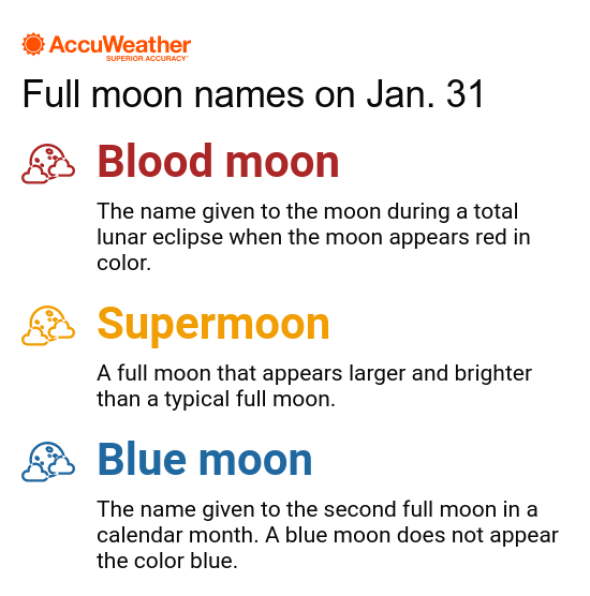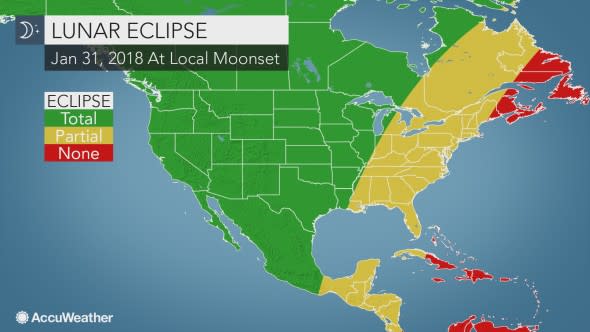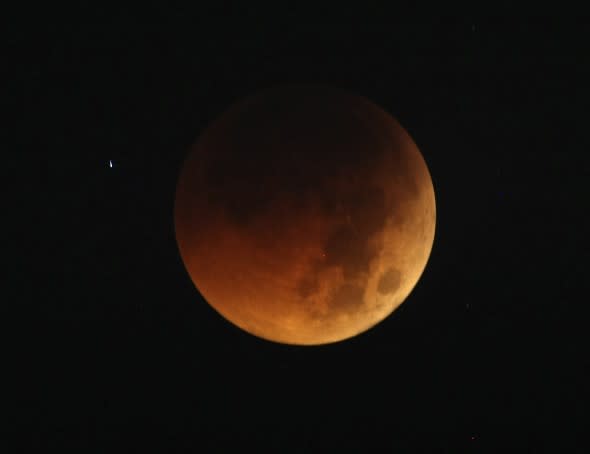Super blue moon to coincide with lunar eclipse for 1st time in 150 years
A blue moon, a supermoon and a lunar eclipse will all fall on the same night at the end of January in an event that hasn't happened in over 150 years.
These three lunar events separately are not uncommon, but it is rare for all three to occur at the same time. The last time that there was a blue moon, a supermoon and a total lunar eclipse at the same time for North America was on March 31, 1866.
More recently, a blue moon, a supermoon and a lunar eclipse occurred at the same time on Dec. 30, 1982, but only for the Eastern Hemisphere. Because of time zones, the full moon was not considered a blue moon for North America as the previous full moon occurred at the end of Nov. 30, not early on Dec. 1.

The full moon will rise on the evening of Tuesday, Jan. 30, and set around daybreak on Wednesday, Jan. 31, local time.
People all across North America will be able to see the moon light up the night sky, as long clouds do not interfere, but only those in the central and western parts of the continent will be able to see a total lunar eclipse.
How to view the total lunar eclipse
For most of the night, the moon will appear its normal color. However, during the predawn hours on Jan. 31, the moon will turn a rusty orange or red color as it passes into the Earth's shadow.
During a total lunar eclipse, the moon passes through the darkest part of the Earth's shadow. Unlike a total solar eclipse which lasts only minutes, this will last for several hours.
"This will be the first total lunar eclipse since 2015," AccuWeather Astronomy Blogger Dave Samuhel said.
Much of the United States and Canada will be able to see the total eclipse before the moon sets around daybreak, local time.
However, those in the eastern United States and eastern Canada will only see a partial lunar eclipse as the moon will set before it enters totality.

During a total lunar eclipse, the moon is sometimes referred to as a blood moon. This name is derived from the red color that the moon turns during the height of the eclipse.
"Some sunlight still reaches the moon [during a total lunar eclipse], but first it goes through Earth's atmosphere. The atmosphere filters out most of the sun's blue light, so the moon looks red," NASA said.
During the partial phases of the eclipse, the moon will appear its normal color, but with a part of it shaded dark due to the Earth's shadow.

The moon exhibits a deep orange glow as the Earth casts its shadow in a total lunar eclipse as seen in Manila, Philippines, before dawn Thursday June 16, 2011. Asian and African night owls were treated to a lunar eclipse, and ash in the atmosphere from a Chilean volcano turned it blood red for some viewers. (AP Photo/Bullit Marquez)
Mainly clear skies should allow for excellent viewing conditions across the Southwest and part of the Atlantic Seaboard on Tuesday night into early Wednesday morning.
Moisture from the Gulf of Mexico may lead to disruptive clouds for onlookers in the Deep South, while a far-reaching storm spreads clouds from the Pacific Northwest to the Great Lakes.
The eclipse can also be viewed online for free on NASA TV or NASA.tv/live.
People across North America that miss this month's eclipse will have to wait only one year for the opportunity to view another.
The next time that a total lunar eclipse will be visible from the United States and Canada will be on the night on Jan. 20, 2019, with the entire eclipse being visible across all of North America.
This lunar eclipse will also occur during a full supermoon, making the blood moon appear larger than the average lunar eclipse.
Questions or comments? Email Brian Lada at Brian.Lada@accuweather.com and be sure to follow him on Twitter!
Follow @wxlada
